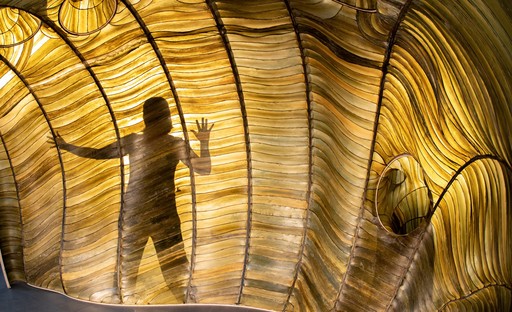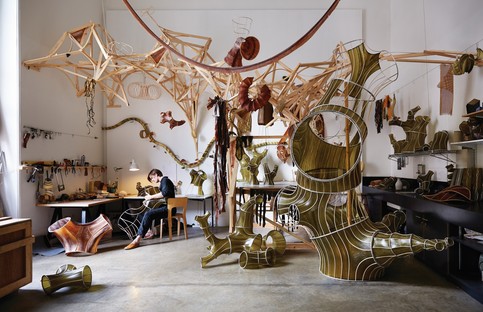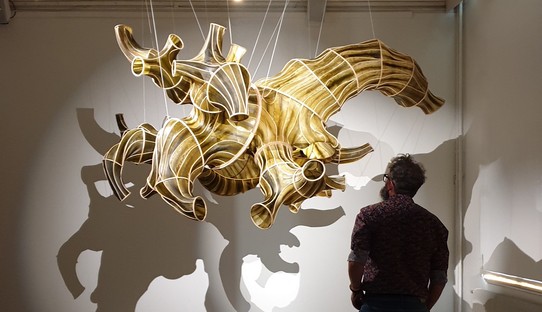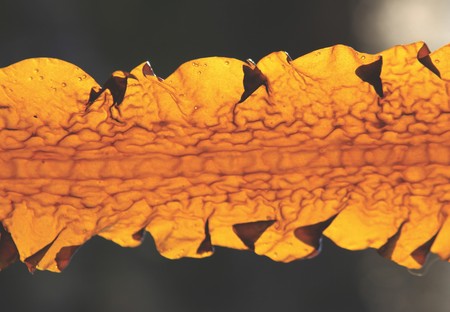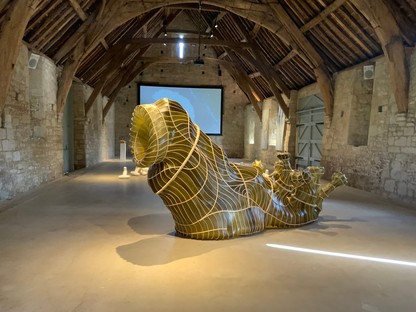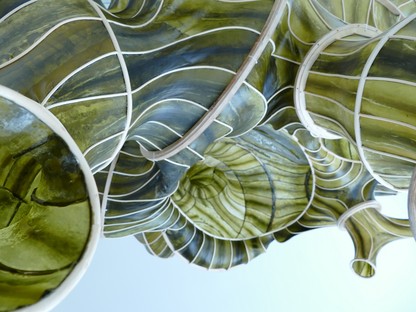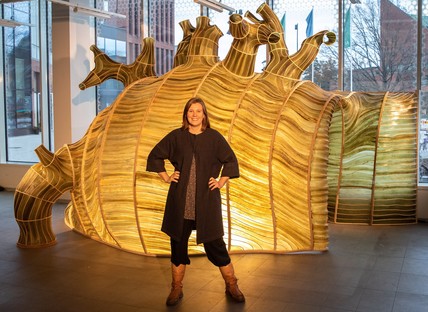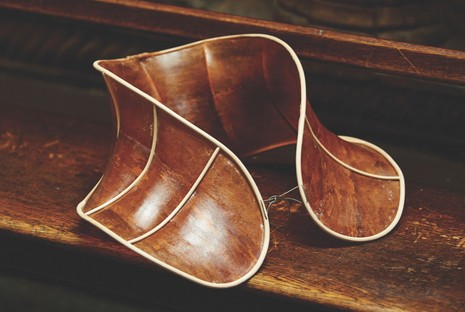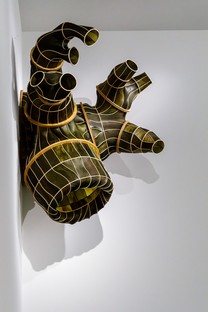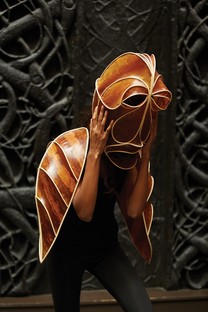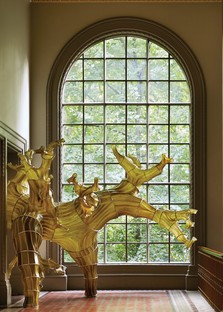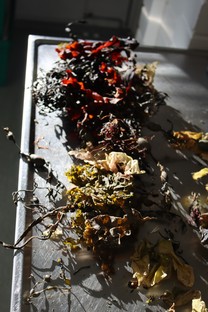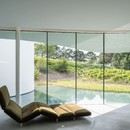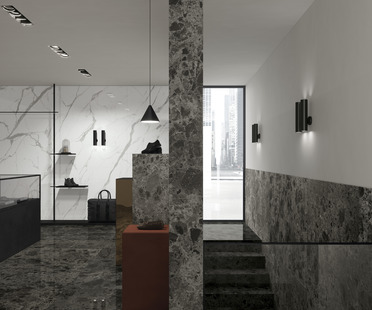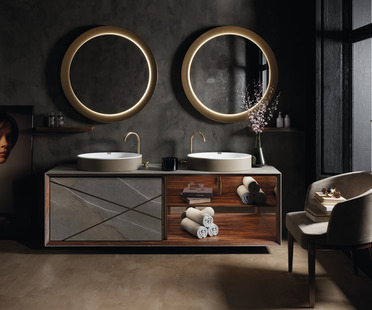
It all began with a trip to Japan, where she visited a seaweed market, in 2007. Since then German designer Julia Lohmann, a professor at Aalto University in Helsinki, has begun – and still continues – to study seaweed. She founded the Department of Seaweed, a multidisciplinary team of scientists, designers, artists, philosophers and politicians who study the future of seaweed as a sustainable resource and its ability to replace materials such as wood, fabric, leather, paper or plastic. For demonstration and research purposes, Lohmann uses seaweed to make surprising organic sculptures that look like fantastic animals, exhibited at the Victoria & Albert Museum in London and, recently, at the 24th Biennale of Sydney.
The designer’s starting point is clear: “ We need an empathic, more than human-centric way of engaging with nature.” And on the topic of seaweed, she explains: “It can be grown in the sea, by methods that improve the ecosystem, because they eliminate excess nutrients that would otherwise damage the environment.” And, above all, she underlines the correct approach to this kind of crop: “We shouldn’t simply replace one material with another, less harmful material. It’s a matter of mental attitude, a regenerative rather than an extractive approach. Humankind has an incredible impact on the environment, in a disastrous way. We must succeed in changing our footprint with a different way of producing materials and objects. For example, in the Baltic sea, we need to eliminate excess nutrients: growing and harvesting seaweed would be a good way to do this.”
It’s not just a matter of seaweed: Lohmann’s research ranges from bio-materials to virtuous environmental practices. She is promoting a research project entitled CreaTures (Creative Practices for Transformational Futures) investigating the role that existing but little-known creative practices can play in supporting environmental and social sustainability. These include the Baltic Sea Lab, which develops cooperative methods and tools motivating people to promote the health of the sea, with a network of potential ‘sea stewards’ to protect the marine environment in their home areas. Another of Julia’s projects, supported by the Academy of Finland, is BioColour, investigating organic alternatives to synthetic colourings, which produced an exhibition in Rovaniemi and a book. Following her studies and research in Britain, Julia is now working in Finland: “In this country, and specifically at Aalto University, where I teach Contemporary Design Practices, there’s a constant exchange among the disciplines of design and chemistry, with the goal of making progress in the area of biomaterials.” She adds another current project: “It’s called Nordark, supported by Nordplus: it investigates the needs of the plant and animal worlds in relation to nocturnal lighting in the Nordic countries”.
At this point it is inevitable to ask a question about plastic: what is Julia’s vision? “Plastic is a super-material. It lasts forever and allows you to do a lot of things, but the way we use it is a complete disaster. We use an object that could last hundreds of years for only a few minutes. It’s ridiculous. There’s absolutely no correspondence between the use and the durability of this material. We need to be more aware of time as the unit of measurement of things. It takes millions of years for petroleum to form underground, and we use a whole bunch of energy to transform it, then the result of all this work is used for only a few minutes...” Julia goes back to the concept of regeneration and her beloved seaweed: “Philosophically speaking, seaweed can be an inspiration for us. Seaweed is a very strong, high-impact organism, a bit like humanity, and yet it doesn’t grow at the expense of other species, or by damaging them; instead, it helps support the ecosystem. Humans must be the agents restoring the balance of the generative process we ourselves have knocked out of kilter.”
Antonella Galli
All photos: courtesy of Julia Lohmann
Captions
01
Julia Lohmann, Hidaka Ohmu, Aalto University; photo Mikko Raskinen
02
Julia Lohmann Department of Seaweed residency, studio VandA; photo Petr Krejci
03
Julia Lohmann, Kombu Ahtola, Seaweed Sculpture
04
Saccharina latissima backlit; photo Julia Lohmann
05 - 06
Julia Lohmann, Kombu Nudibranch at Messums Wiltshire, 2022; photo Julia Lohmann
07
Julia Lohmann, Hidaka Ohmu, Aalto University; photo Mikko Raskinen
08
Seaweed Collar, photo Petr Krejci
09
Corpus Maris at Sydney Biennale 2022, photo Shimroth Thomas
10
Julia Lohmann, Seaweed Mask Wings; photo Petr Krejci
11
Julia Lohmann, Oki-Naganode at the Victoria and Albert Museum 2013, photo Petr Krejci
12
Selection of Algae, photo Julia Lohmann














